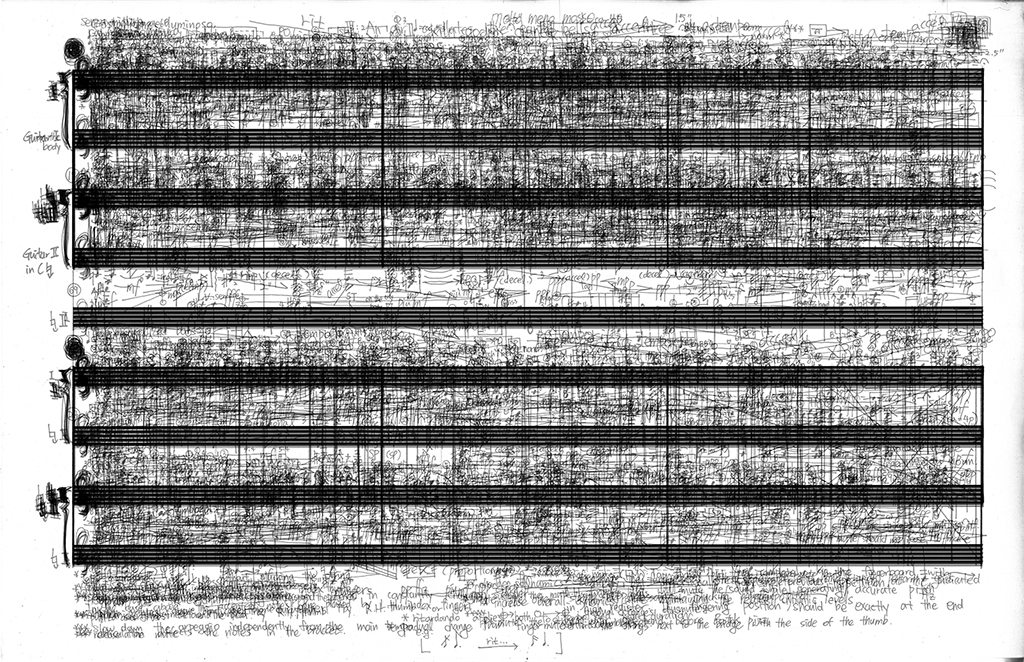
I. chamber in the heart of fire
II. kiln gods' dance
III. an air oscillates the earth bells for three days
3rd movement, “an air oscillates the earth bells for three days”
Sungmin Shin, Guitar 1 and 2, Studio Recording
Award:
Hanson Ensemble Prize, Eastman School of Music
Duration: ca. 16 minutes
Program notes
The piece is preponderantly inspired from the multiple letters which I have been exchanged with the American master potter Warren Mackenzie (b. 1926). It fabricates various and enigmatic sceneries in the process of firing and cooling potteries. Direct images like throwing woods into kiln, combustion of clay and woods, convection of heats, vitrification of potteries with their varied glazes, and cracking ringing notes of them in the cooling procedure (about three days) are depicted in the music.
Technically, to express the manifold oscillating sounds of potteries, I have used Chladni's law and its modified form by R. Perrin and T. D. Rossing, c x (m + bn), where c is fundamental, m and n are integer series, and b and p are positive rational numbers. By using this equation, I have generated various types of virtual “bells” with diverse chords and timbres. Here, I have chosen b as [0.8, 1, 1.2, 1.4, 1.618] and p as [0.832, 1, 1.4, 1.618, 1.81, 1.91, 2, 2.28], and most of these numbers are from the discourse which have relatively low deviations from the actual acoustical outputs, while some numbers are chosen intuitively. Besides the equation, I have set up passacaglia based on B undertone series and created multiple combinations of the series with different B/P values which emanate numerous iridescent chords representing the diverse oscillations of visionary potteries.
Pragmatically, this piece explores extended techniques and quarter-tone tuning to create an adventurous sound world, rich in timbral and harmonic nuance. This is accomplished mostly by means of traditional notation, in an effort to facilitate performance. Thus, the accompanying recording, which is of very good quality, may help to convey more immediately the character of the soundscape.
